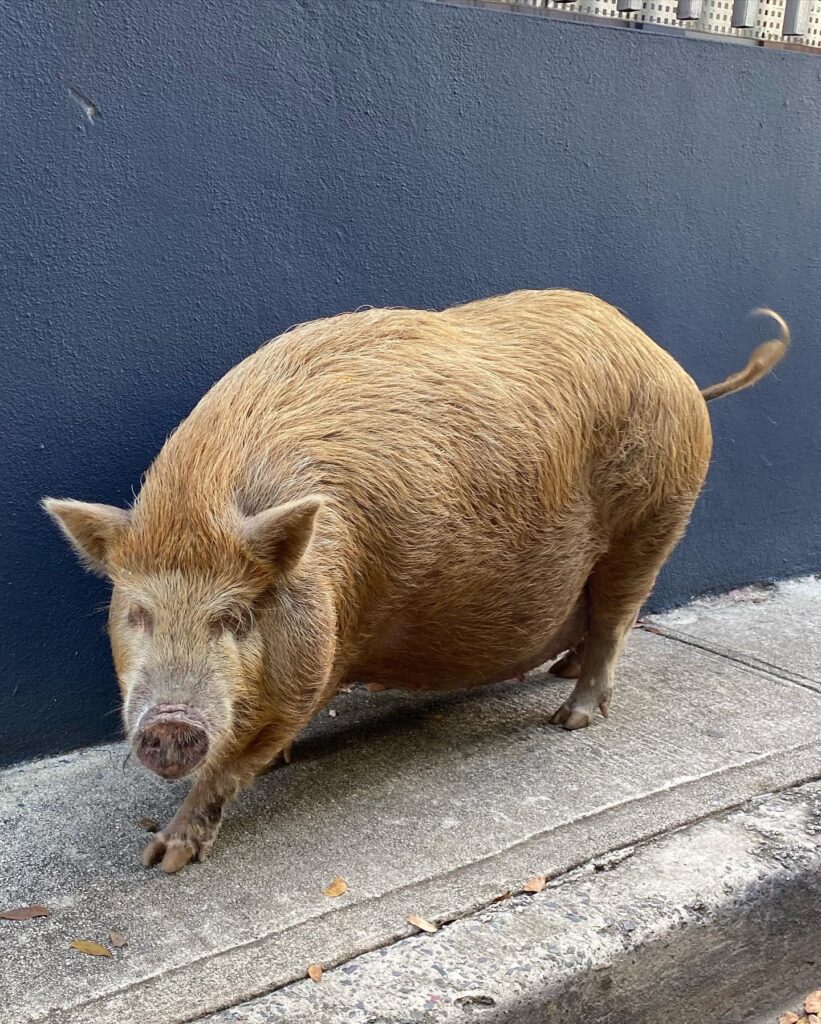
I recently had the opportunity to spend time on the lush and culturally abundant island of Puerto Rico. The small country has endured centuries of Spanish colonization, and to this day, is still not an independent nation. Despite the brief period of autonomy that Puerto Rico held in the late 1800’s, victory on behalf of the United States in the Spanish American War put an end to it. The Treaty of Paris in 1898 granted the US control over the island and has remained a provincial state since then. During my time there, I recognized the lasting impact that Spanish Colonization and current US power have on the island while simultaneously experiencing their cultural roots.
Puerto Rico is a commonwealth of the United States and therefore the US has control over much of the nation’s function including the penal system, transportation, infrastructure, trade, and education. Perhaps the most obvious manifestation of US presence on the island that I experienced is their currency. I was able to use the United States Dollar at every establishment. The most striking example was when I was able to use my credit cards on the island with no fees or penalties, which is something I learned the hard way is not typical when leaving the country.

Even with commonwealth status, Puerto Rico has governed themselves for decades. In 1950, US President Harry Truman signed Public Act 600 and gave the island an opportunity to draft a constitution of their own. This gave PR autonomy over all local affairs and a thread of independence that they had been without for hundreds of years. This dynamic became apparent to me during my trip specifically in regard to COVID-19 protocols that were drastically different from what I was used to in the US. Masks were a social expectation even when walking on the street, vaccination cards were checked when entering coffee shops, and curfews were spontaneously put into place by the governor halfway through my trip.
Over one hundred years since Spanish colonizers ceded the Caribbean island, it is evident that they were there. The primary motive of Spanish colonization in Puerto Rico was to turn the island into a military outpost. Given its position, it was seen as the entrance to the Caribbean and parts of South America and therefore a valuable asset to the Spanish Military. This is most evident in Old San Juan, where numerous forts connected by a towering stone wall around the city are still standing. The forts and militaristic focus were successful in protecting the island from numerous attempts of conquest by the Netherlands, France, and Britain. The unique architecture of these forts, especially the garitas, are significant symbols of Spanish occupation that have become commonly associated with the island’s imagery.
The wall itself, standing 45 feet at its highest, is itself a constant reminder of Spanish colonization. Its impact beyond militaristic protection can be seen in the Old San Juan neighborhood of La Perla. Recently put on the map by Puerto Rican artists byway of their global hit song Despacito, the small community of now just 300 people has consistently faced incomparable oppression and segregation. It was orginially made to house slaves that were brought over from Africa in the 16th century to fufill labor demands for later elaboatred on commodity porudction. The wall acted as an impenetrable divide between groups of people on the island and even now, is perceived as a drug ridden and gang controlled slum that can only be accessed through three points in the wall.

Outside of the wall 
View of La Perla from El Morro
In addition to the militaristic transformation during Spanish Occupation, the Spanish established a sophisticated agricultural system on the island. The main commodities that were produced for export were cattle, sugarcane, tobacco, ginger and coffee. As these sectors of production grew, so did the need for labor. The Spanish satisfied this need by importing slaves. To quantify this, the number of slaves in PR increased from 1,500 in 1530 to 15,000 by 1550.
Spain maintained power in their colony primarily through military force and decree. As far as governing the population of the island, Capitan Generals of the military dictated “leyes especiales”, or extraordinary decrees. In terms of maintaining power on the island in the face of interested other European nations, the military was successfully used. Exports of agricultural goods and cheap labor was how the economy was sustained throughout the colonial period.
There is not much justification to the colonization of Puerto Rico apart from the fact that Spain was one of the largest colonizing nations in the world. Expanding their territory and power was the main motivation. Chrisopher Columbus’s arrival in 1493 began Spain’s exploitation of the country’s location and arable land. It is probable that they saw value in their presence because of the idea that they were protecting the western islands of the Caribbean from other colonizing nations. Spain was rather neglectful to the people of PR though because of the island’s lack of mineral richness.

Sanata Maria Maddalena Cemetery 
Architecture 
Parque de Las Palomas
Perhaps the “good” that was brought to the island by the Spanish, though not intentional, is the culture that was created by their presence. Mixed bloodlines of African, Spanish, and indegenious Taíno and Carib Indians resulted in an incredibly dynamic and diverse population with a unique culture. As a tourist in 2021, I was able to acknowledge the roots of the different demonstrations of religion, architecture, food, music, and language I witnessed.

Sources
- Dhara. (2020, May 2). A guide to visiting El Morro, the historic fort in San Juan, Puerto Rico (+ photos and tips!). It’s Not About the Miles. Retrieved January 28, 2022, from https://notaboutthemiles.com/guide-to-visiting-el-morro-san-juan/
- History. Discover Puerto Rico. (n.d.). Retrieved January 28, 2022, from https://www.discoverpuertorico.com/island/history#!grid~~~random~1
- History.com Editors. (2017, September 28). Puerto Rico. History.com. Retrieved January 28, 2022, from https://www.history.com/topics/us-states/puerto-rico-history
- Photos by me except for the flags, which is cited above



